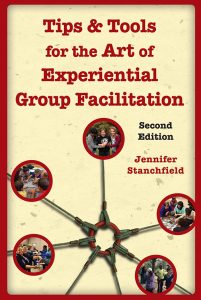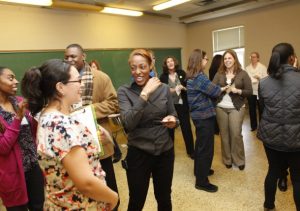Aug 01, 2017 Choice, Control, and Ownership in Learning and Group Experiences

Excerpt from Tips & Tools for the Art of Experiential Group Facilitation
Enhancing Involvement
In past posts we’ve established that when people feel like they own their learning experience and have a sense of control and ownership from the start, buy-in, and participation increases. Simple but intentional actions on the part of the facilitator establish this kind of trusting environment where participants feel empowered as partners in learning rather than at the mercy of the facilitator.
Think about creating opportunities that build a sense of choice and control for participants throughout the program. For example, I’ve changed the way I facilitate a favorite commonalities-building and active-reflection activity, Have You Ever? (see the blog archive or page 48 of Tips & Tools for the Art of Experiential Group Facilitation).
This well-known game originally called for a participant to stand in the center of a circle of group members and ask a Have You Ever question (e.g., “Have you ever flown a kite?”). Everyone in the circle who has flown a kite then leaves their spot and finds a new one. The person from the center grabs one of those empty spots, leaving someone new in the center to ask a question. Because participants shared their negative experiences with what I thought was a fun and inclusive game, I realized that participants who are more introverted can sometimes find this game fear inducing. When some people are put on the spot to come up with a question, they can experience enough of a stress overload to actually decrease cognitive engagement (Willis, 2010).
In a workshop many years ago, during a discussion about honoring the introverts in the group, one of my participants shared the idea of moving the hot spot out of the middle, replacing it with an alternative color spot in the perimeter of the circle. By making the question spot part of the circle, the fun and challenge are maintained while the tension of being the center of attention is reduced. I now facilitate the game without the middle spot and have seen participation and buy-in increase. It also makes for better communication, as the person asking the question does not have his/her back to half the group. Another idea for building this kind of choice and control is to establish, at the beginning of the game, an easy buzzword for the person on the hot spot to say if they can’t think of a question.

Facilitators often add the rule that you cannot go to the spot next to you when participating in Have You Ever? When I stopped adding this rule, I found participation increased, as people are willing to try taking one step over. When that works okay, they sometimes push themselves further next time, and so on.
Creating situations that allow more introverted group members some kind of out or aid gives them an opportunity to participate fully and warm up to group process. They learn to trust that you won’t put them in an embarrassing situation or put them on the spot before they are ready. This technique used during a silly warm-up game can build comfort within the group, enabling participants to push their comfort zones later in the group process when it really matters. If some people are challenged too early in a program before any trust builders or rapport builders, a facilitator risks losing them.
The following are some strategies to help participants feel what John Dewey (1916, 1938) called “perceived internal freedom” and in control of their learning:
• Sequence activities and discussion methods to build comfort within the group incrementally.
• Take time to get the group warmed up! Start with partner sharing before large group sharing.
• Be thoughtful about your language. Inviting participants to share sounds different than calling upon them or telling them they are going to share.
• Allow participants to pass in a group discussion, especially at the start of group process.
• Reflect and check-in throughout so participants can understand the purpose of the activity and why the lesson is relevant and useful to them. Share expectations, requests, and goals.
References:
Dewey, J. (1916). Democracy and education. An introduction to the philosophy of education. New York: Macmillan Co.
Dewey, J. (1938) Experience and education. New York: Macmillan
Stanchfield, Jennifer (2016) Tips & tools for the art of experiential group facilitation Second Edition. Bethany, OK: Wood N Barnes Publishing.
Willis, J (2010) The current impact of neuroscience on teaching and learning. In D.A Sousa (Ed) Mind, brain, and education: Neuroscience implications for the classroom (pp 44-66). Bloomington, IN: Solution Tree Press.



No Comments